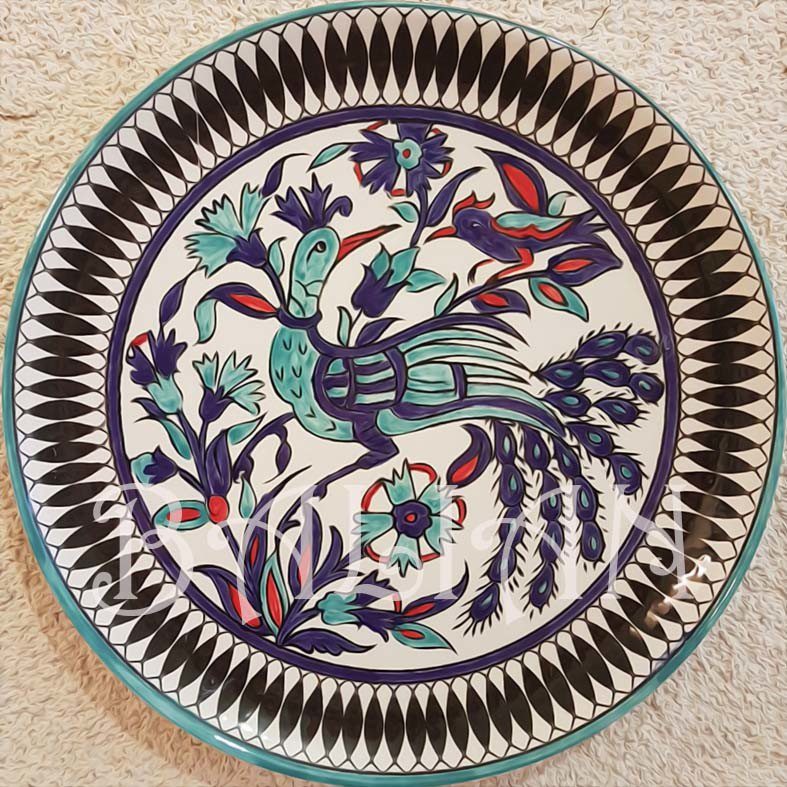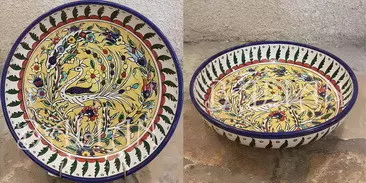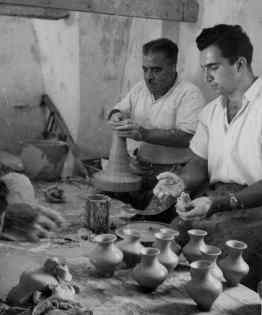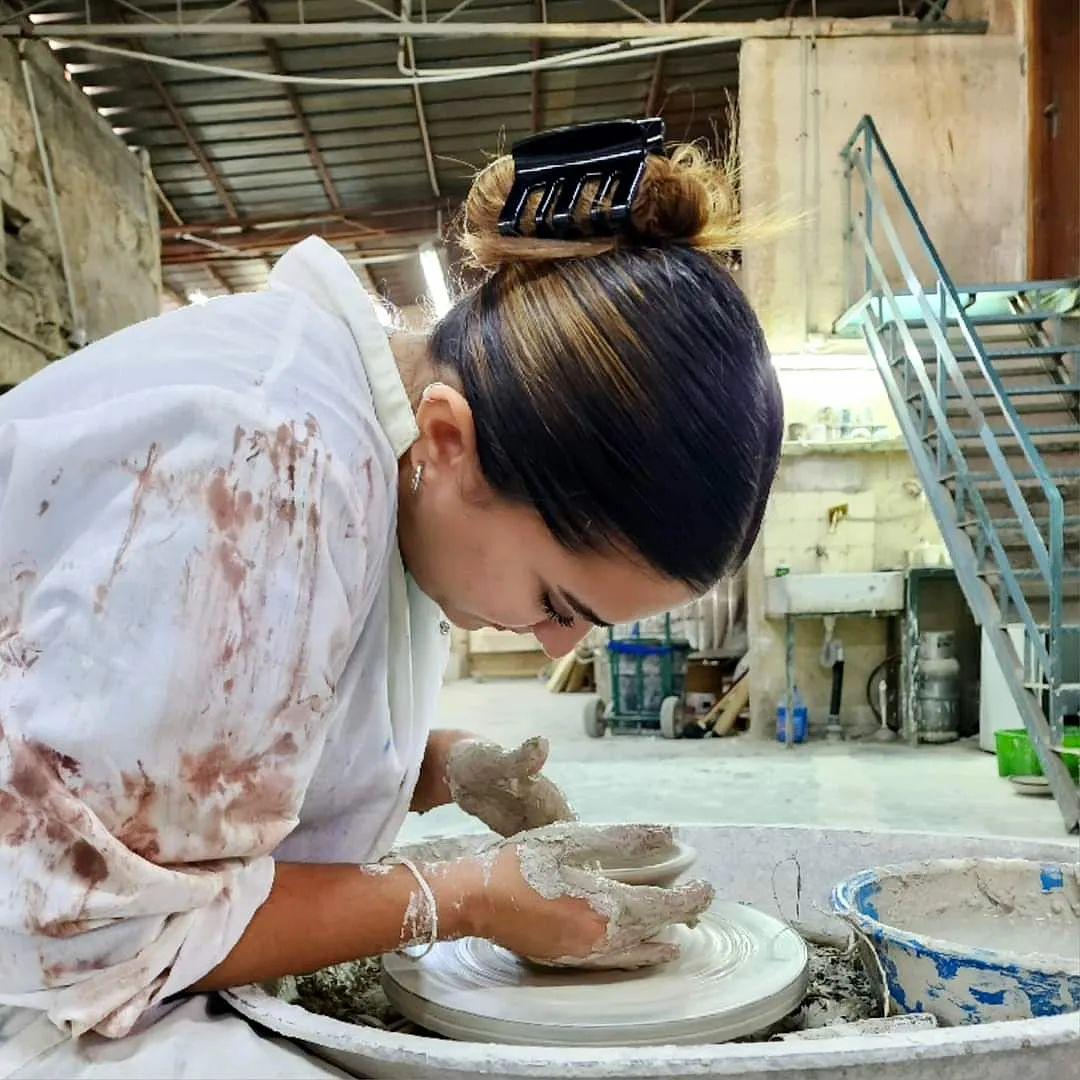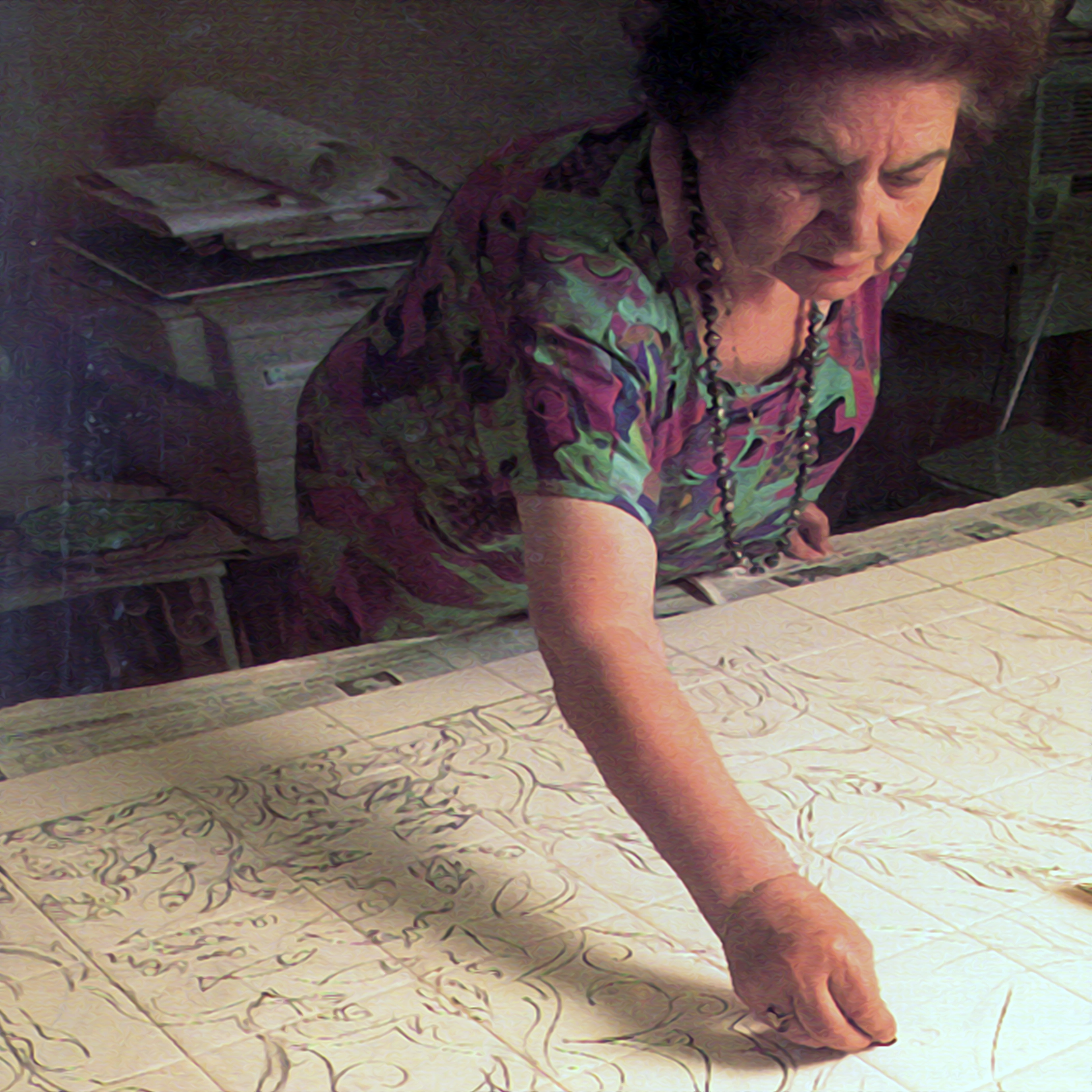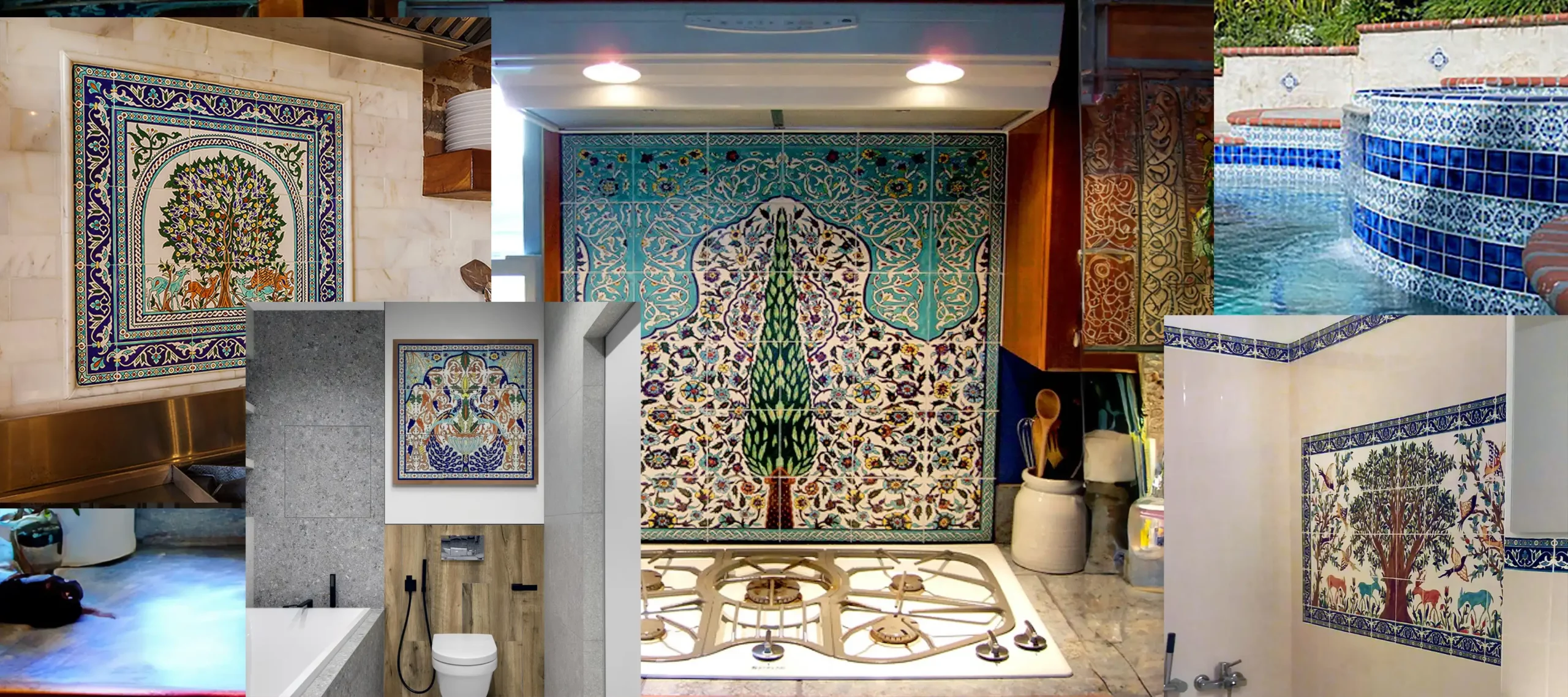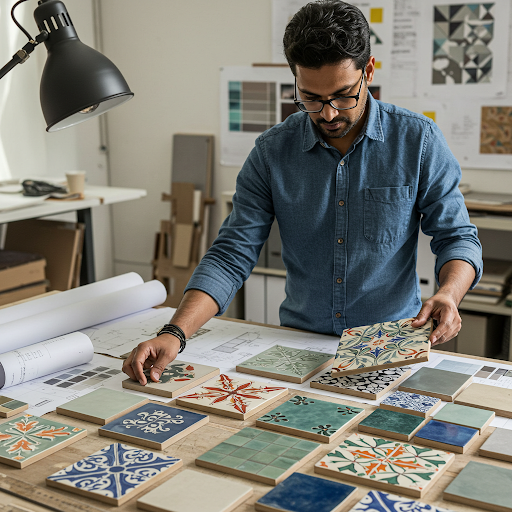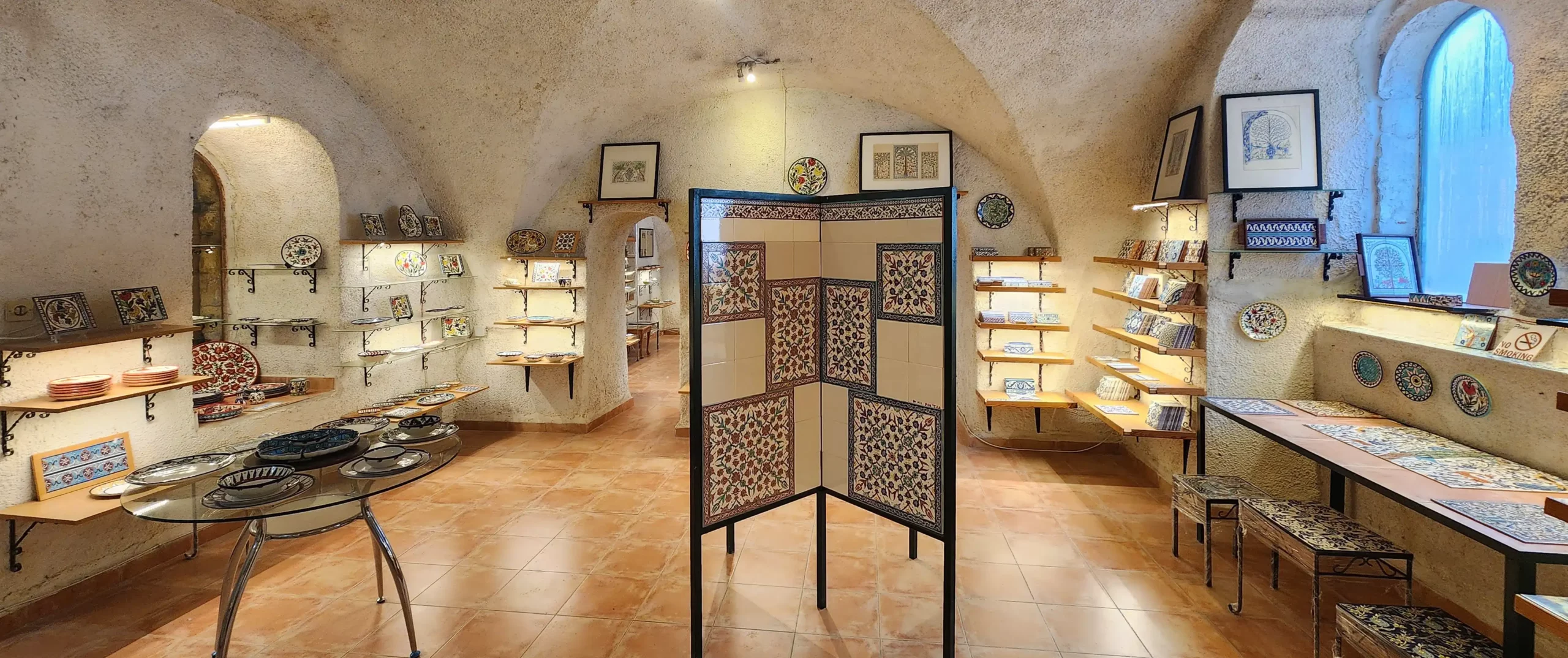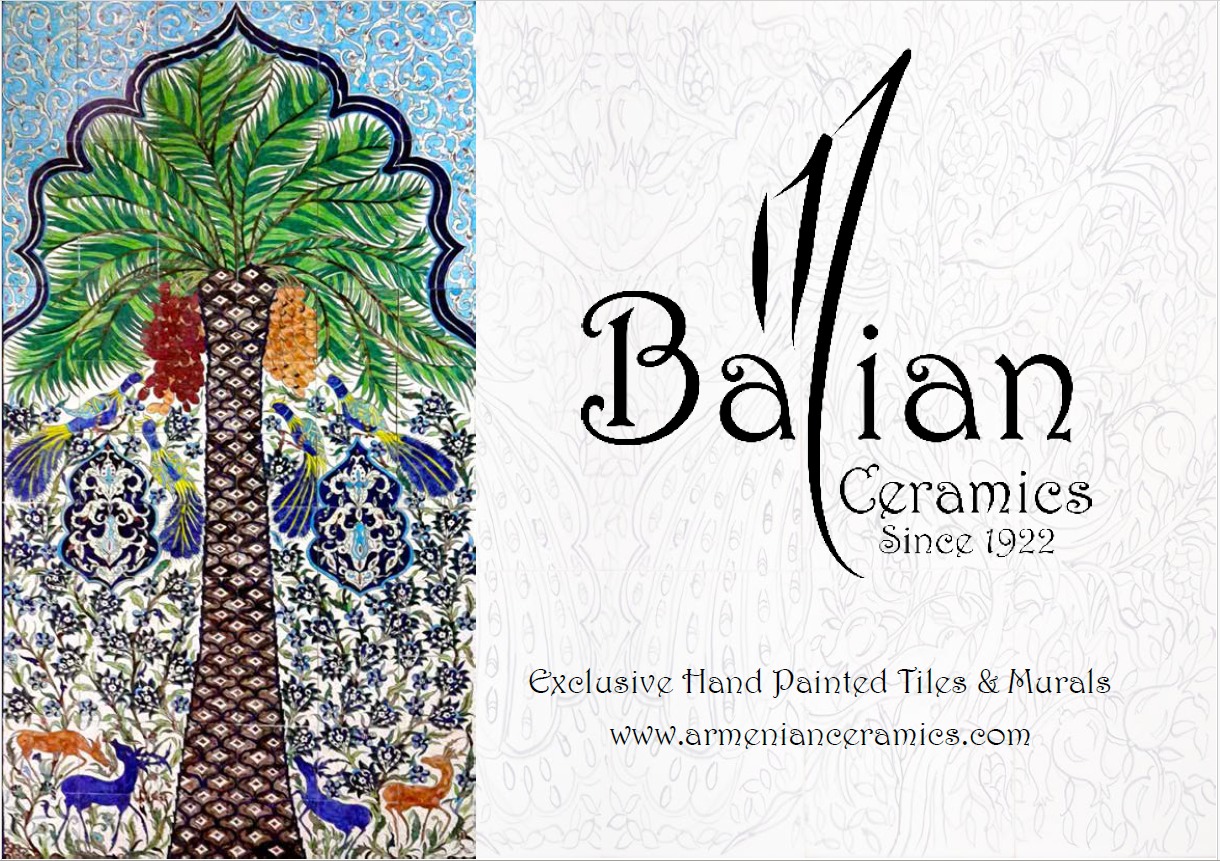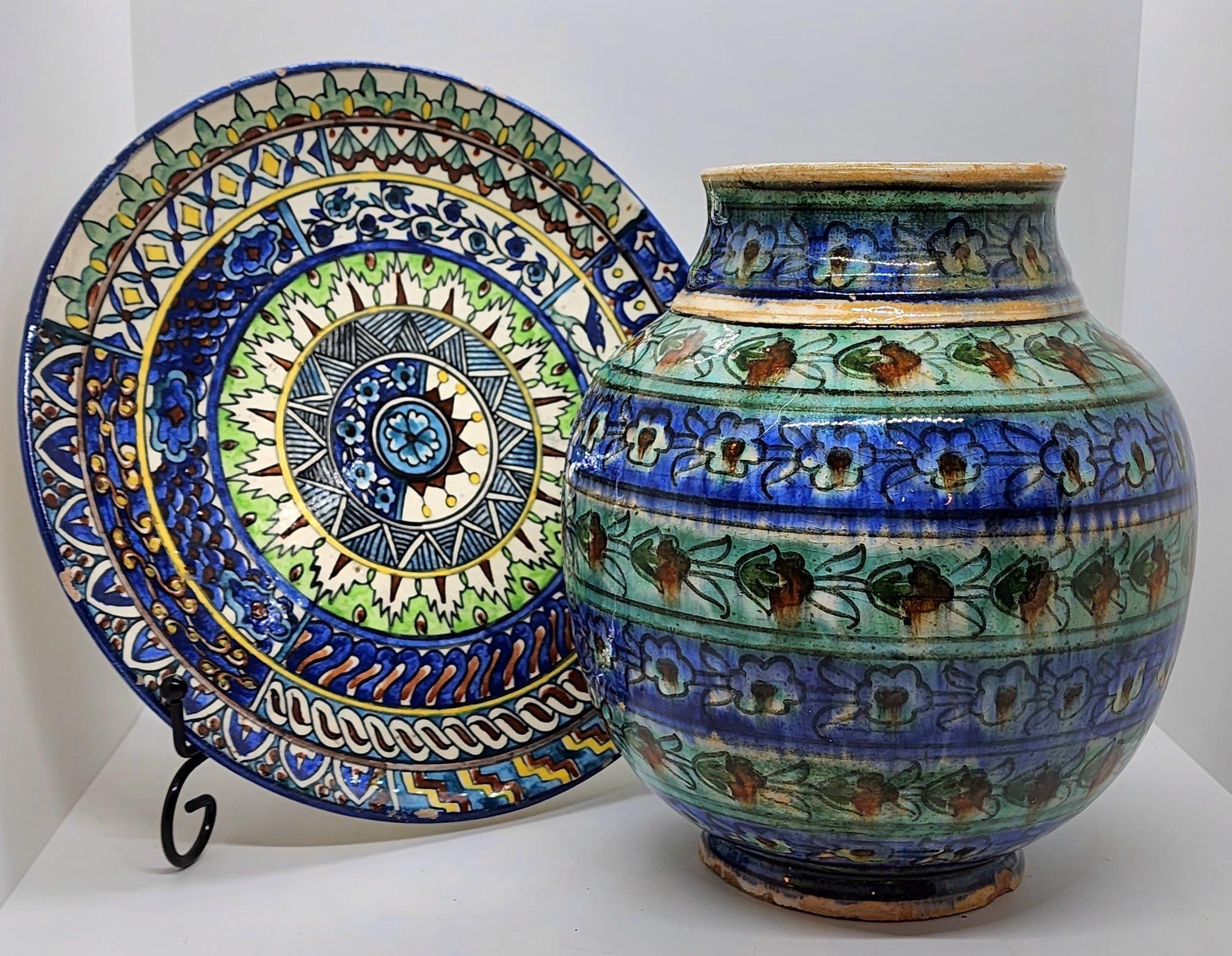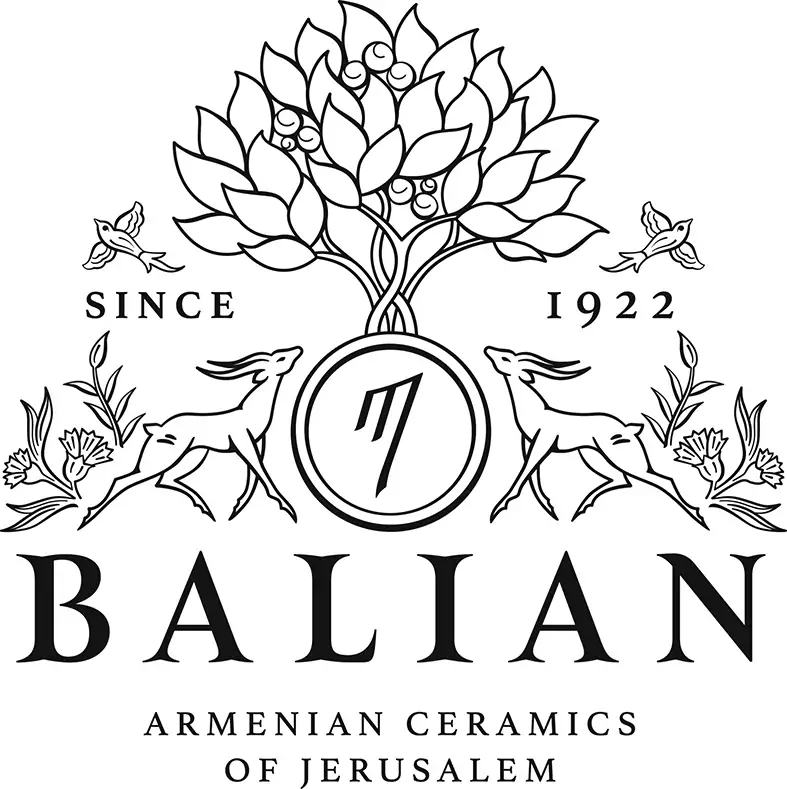The Legacy of The Balian Armenian Ceramics of Jerusalem
Since 1922, the Balian family of Jerusalem has been crafting exquisite hand-painted ceramic tiles and pottery—timeless pieces that are rare to find. This legacy, now over a century old, makes us either the oldest or one of the oldest ceramic studios in Jerusalem. Today, the workshop is led by Neshan Balian Jr., carrying forward a tradition that began when his grandfather, Neshan Balian Sr., arrived in Jerusalem from Kutahya, Turkey, in 1919.
David Ohanessian
A linguist and ceramist from Kutahya. Head of the Armenian Ceramic Association of Kutahya and responsible for bringing the art of Armenian Ceramics to Jerusalem. The owner of the Dome of The Rock Tile Studio from 1919 till 1948. He left for Cairo after the 1948 Arab-Israeli conflict and then to Beirut, Lebanon where he passed away in 1952.
Megerditch Karakashian
An artist and painter of great talent. Together with Neshan Balian Sr., they started the Palestinian Pottery on 14 Nablus Rd. in Jerusalem in 1922. The two partners were inseparable and worked together till 1963, when M. Karakashian passed away. This broke up the partnership, and a year later, Neshan Balian Sr. passed away. His grandson continues the art of Armenian Ceramics in the Old City of Jerusalem at the Jerusalem Pottery Studio.
A master potter, Neshan Balian Sr., alongside artist Megerditch Karakashian, was invited by the British government and David Ohanessian—the esteemed head of the Kutahya Ceramic Association—to restore the iconic ceramic tiles of the Dome of the Rock. Before their arrival, decorative ceramic tile-making and pottery were nonexistent in this region. Together, these three visionaries established what is now known as Armenian Ceramics of Jerusalem, an artistic tradition that has endured for generations.
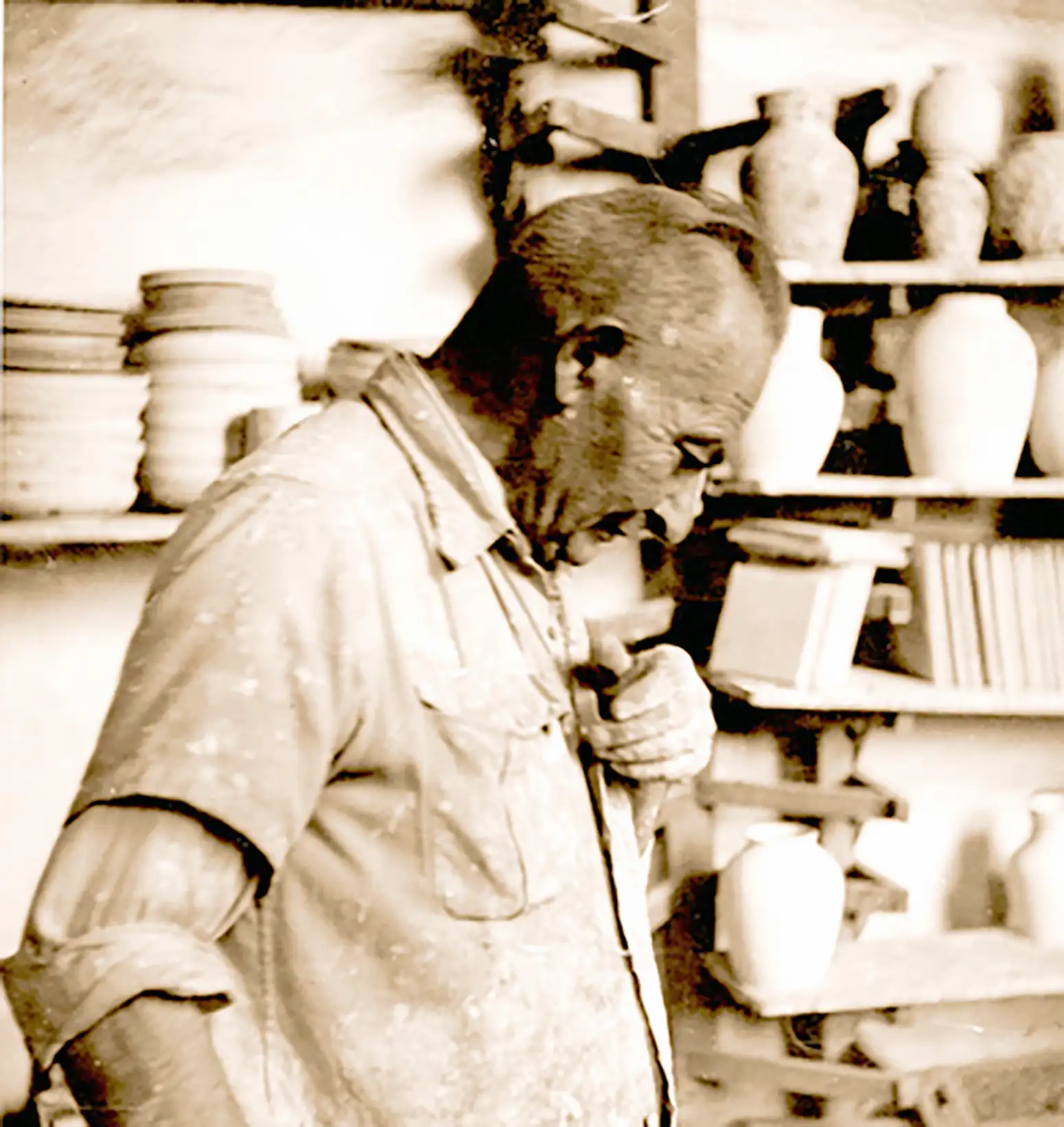
David Ohanessian
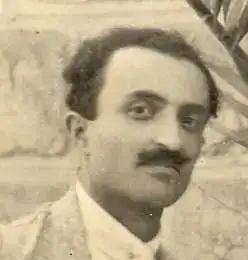
Megerditch Karakashian
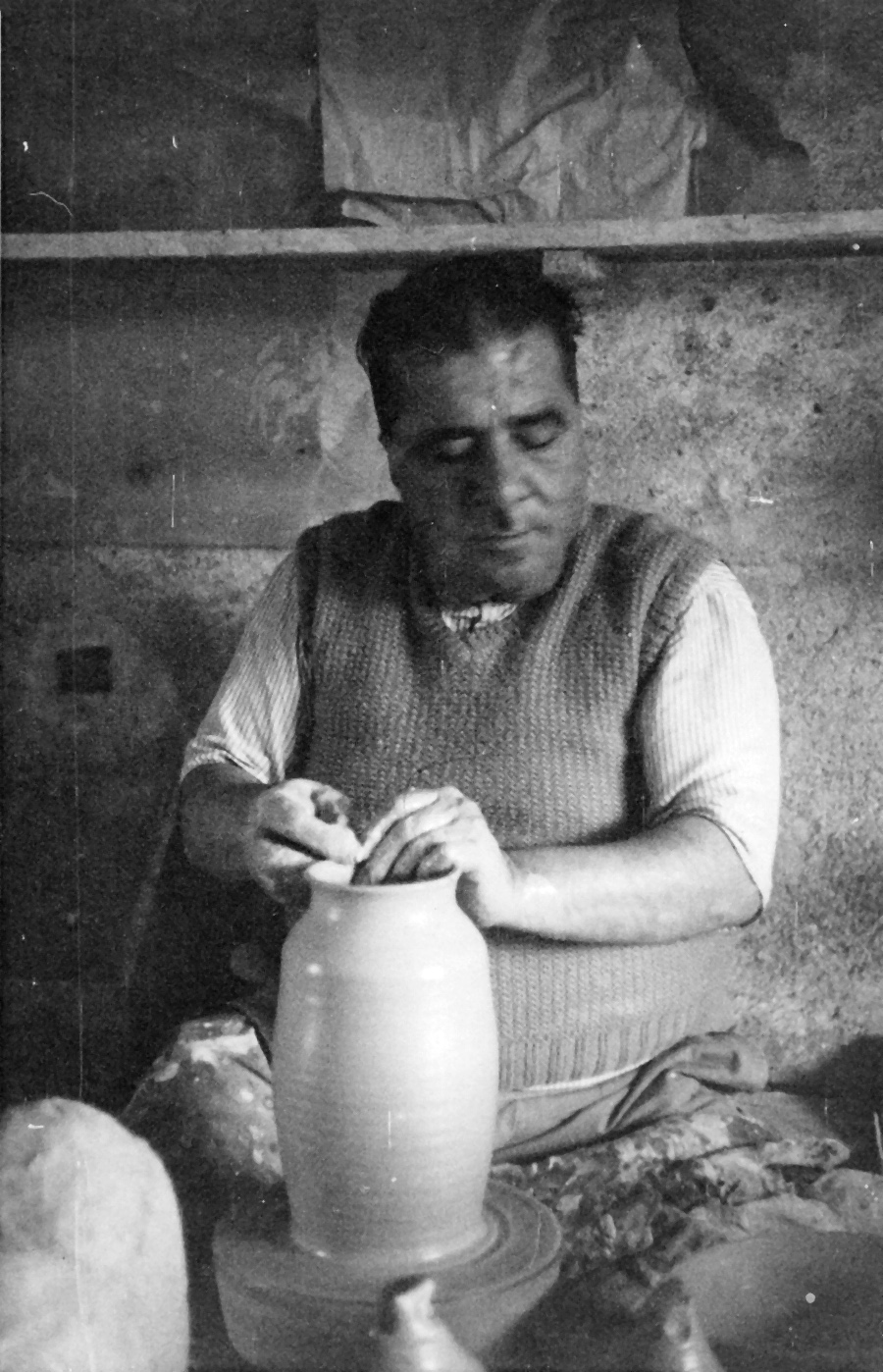
Neshan Balian Sr.
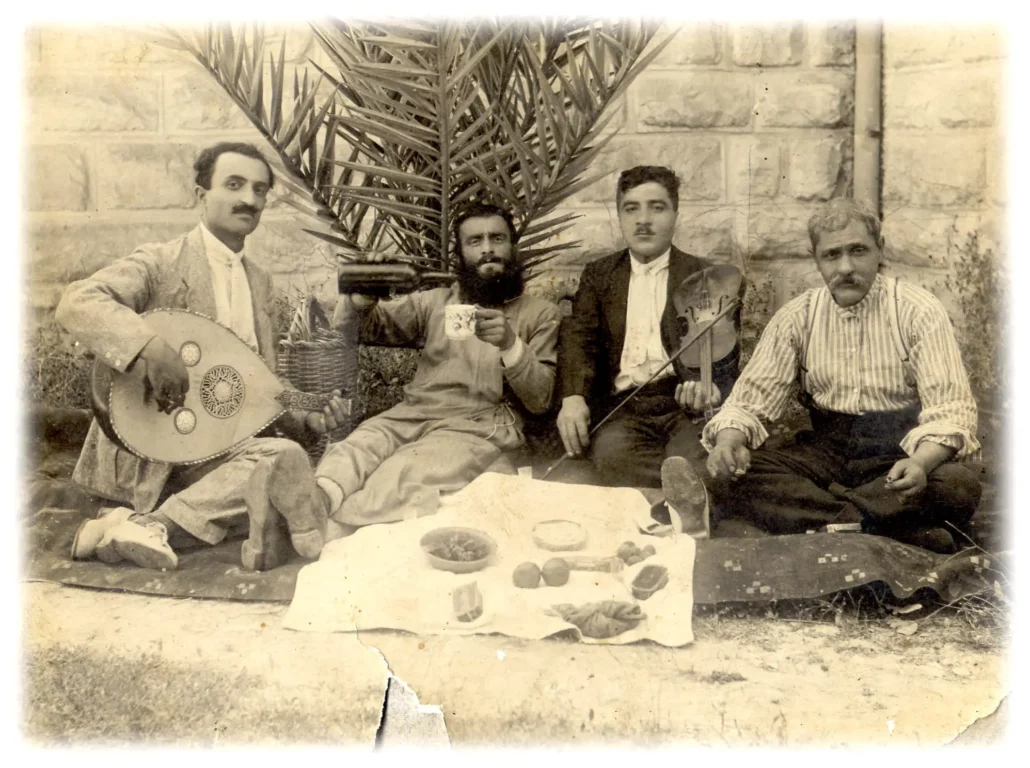
Neshan Balian Sr holding the violin and Mgerditch Karakashian with the Oud relaxing after a hard days work.
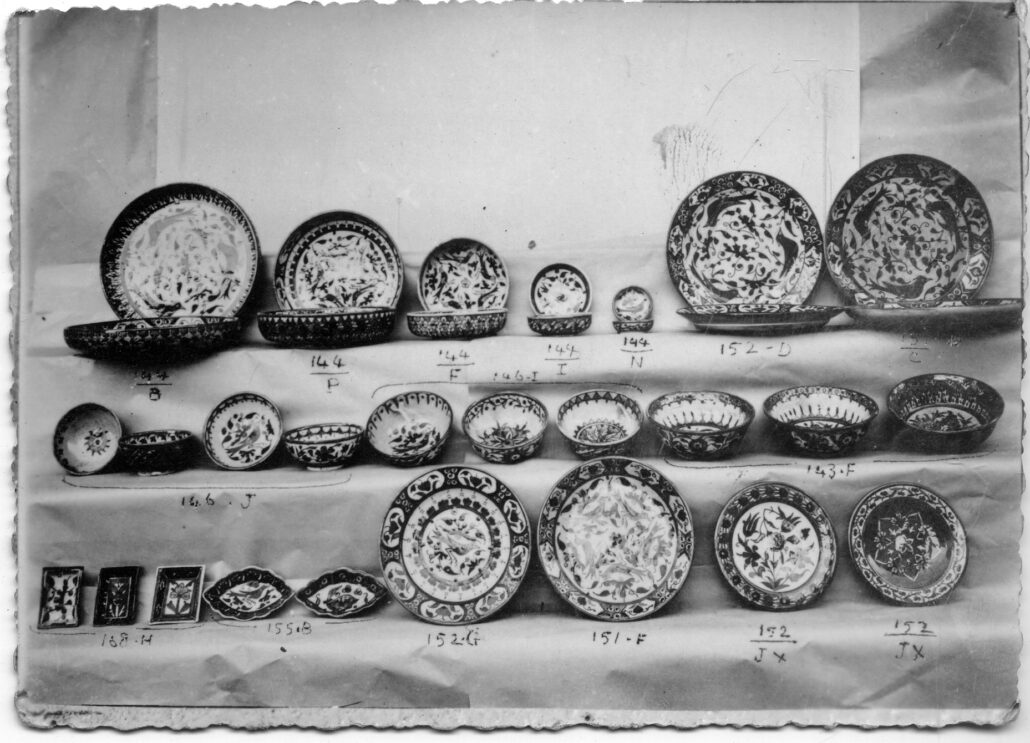
An old photograph of a "brochure" for export clients. 1930s
Following the 1948 Arab-Israeli war, David Ohanessian was forced to close his studio, The Dome of the Rock Tile Works, and leave Jerusalem, later passing away in Beirut. Despite the upheavals of history, the Balian and Karakashian families continued their craft, working together until 1965, when they amicably parted ways. The Balian family remained in their original location, steadfastly preserving and refining this unique artistic heritage.
The journey of Armenian ceramics has been marked by both triumphs and hardships. My late father often recounted the difficult years of the late 1940s when fuel was so scarce that wooden window frames were burned to fire the kiln. The devastation of the 1967 Arab-Israeli war nearly erased our history, leaving only a dome-shaped kiln full of fired ceramics, which were sold to fund the factory’s reconstruction. In the 1930s and 1940s, shortages of raw materials led artisans to crush discarded glass bottles to create much-needed glazes. Yet, through perseverance and ingenuity, my grandfather and father overcame these challenges, ensuring the survival and flourishing of our craft.

The Balis Studio destroyed in the 1967 Arab Israeli war
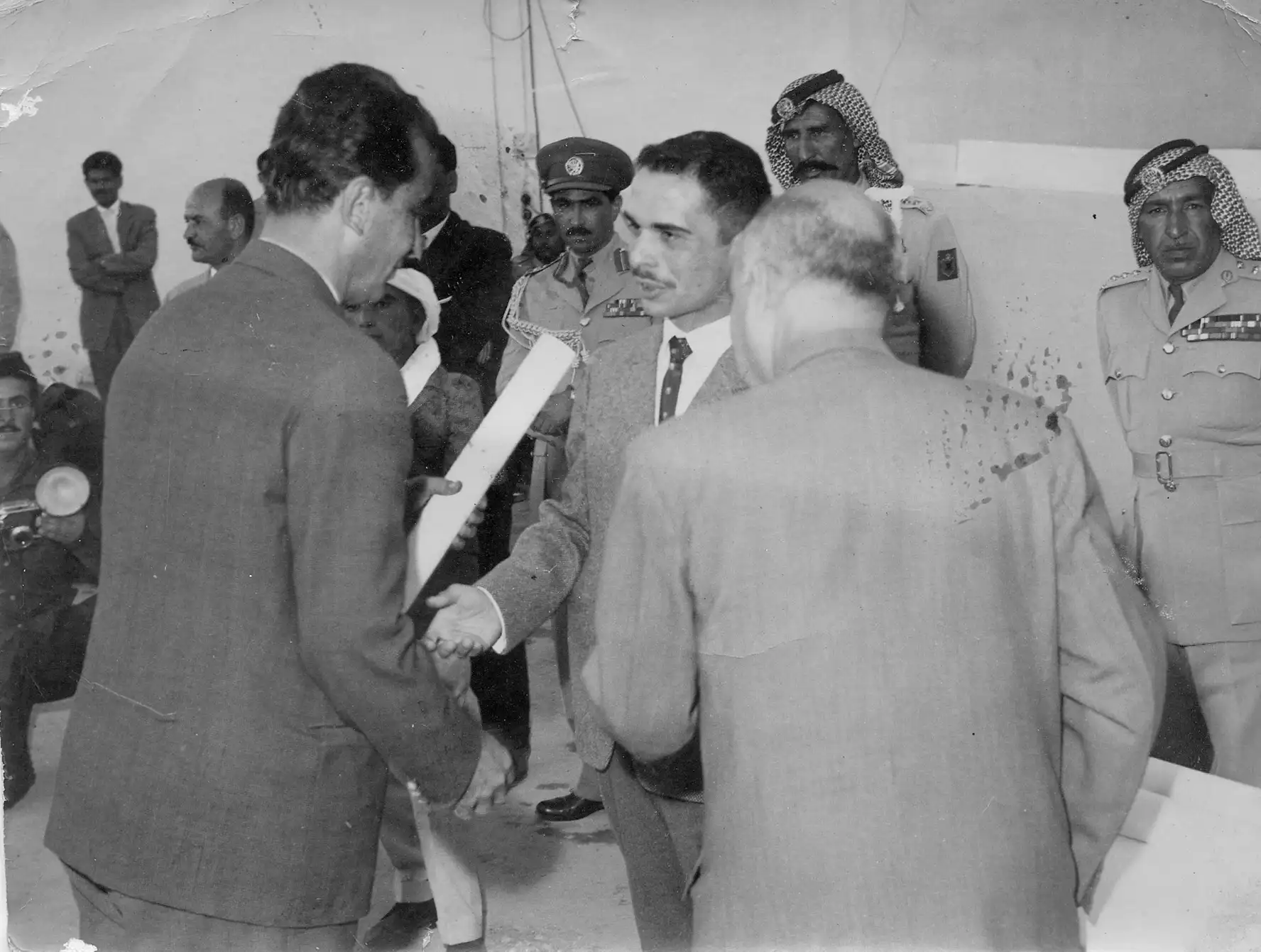
Setrak Balian sr recieving a commendation from the late King Hussein of Jordan for ceramic excellence of the studio
My father, Setrak Balian, studied ceramics under the renowned Ray Finch in England before returning to Jerusalem in the early 1950s. He later established a ceramic brick and roof tile factory in Amman, Jordan. Upon my grandfather’s passing in 1965, he assumed leadership of the Armenian ceramics factory, demonstrating the same mastery of pottery that defined generations before him. I often wish I had more time to learn the wheel-throwing techniques that made both my grandfather and father such remarkable potters.
My mother, Marie Balian, was a world-renowned ceramic tile artist of French and Armenian heritage. Her magnificent ceramic murals have been exhibited internationally, including a six-month solo exhibition at the Smithsonian Museum in Washington, D.C., in 1992, which later traveled to ALMA (The Armenian Library and Museum of America in Boston, MA). Her works were also featured at Eretz Israel Museum in Tel Aviv and the Alicante Museum in Spain in 2003. She played a pivotal role in shaping the artistic identity of Armenian Ceramics of Jerusalem, elevating its reputation to global recognition.
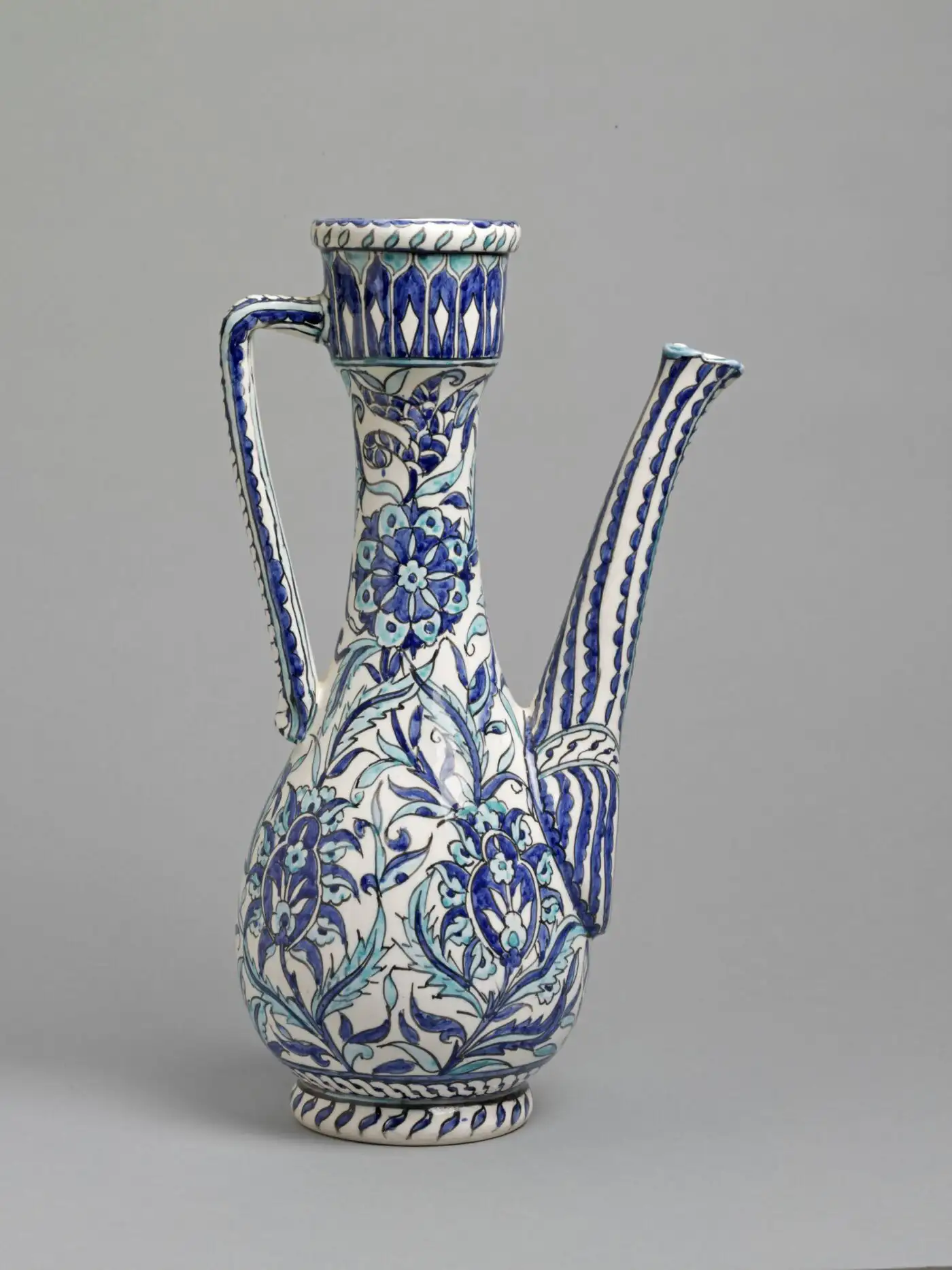
The Vase thrown by Master Potter Setrak Balian & Hand painted by Marie Balian. Niow on permanent display at the Victoria & Albert Museum in London.
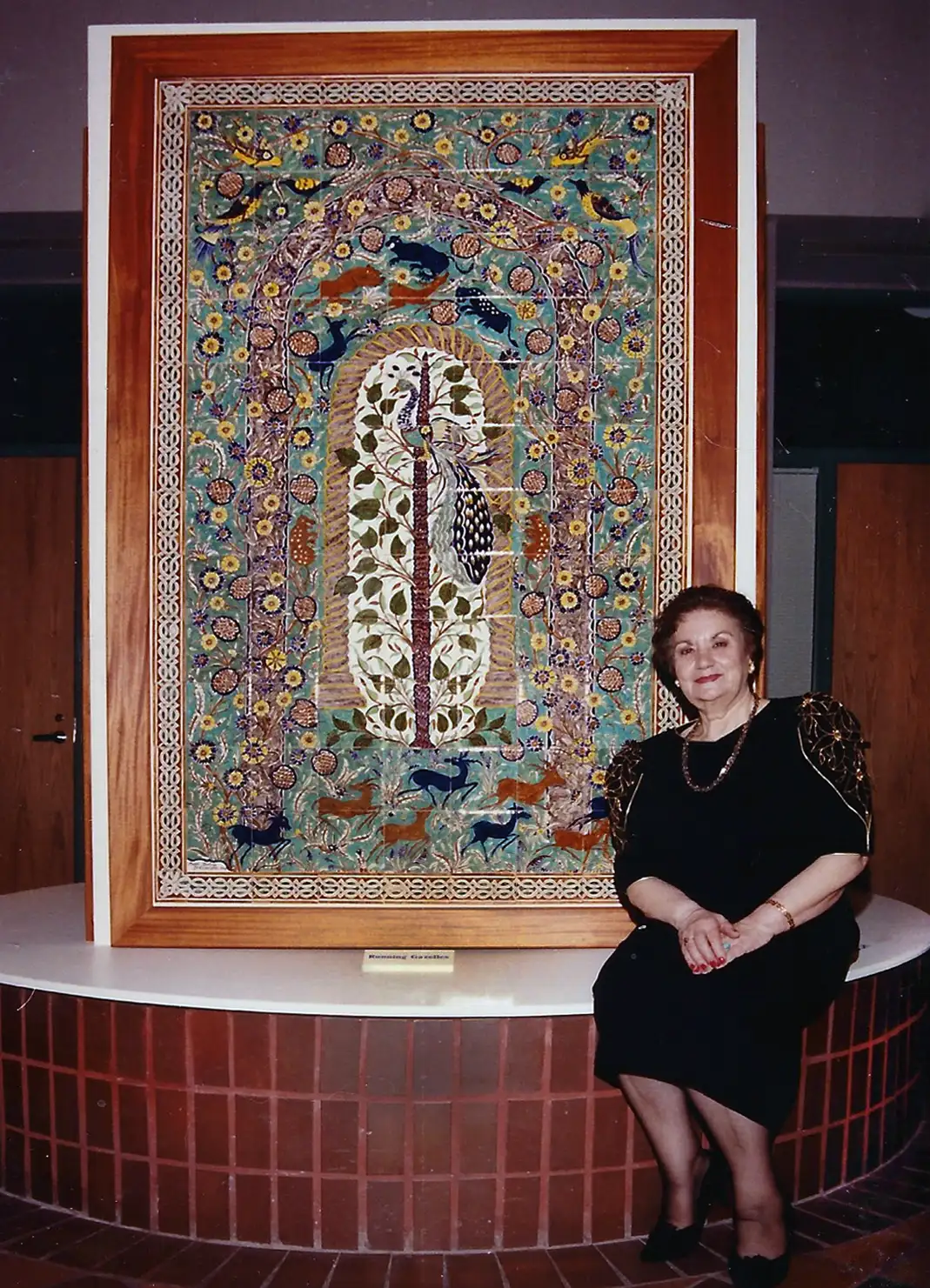
Marie Balian sitting by one of her stunning tile murals at the entrance of the Smithsonian Dilon Ripley Gallery in 1992 her stunning
Since my father’s passing in 1996, I, Neshan Balian Jr., have taken on the responsibility of preserving and expanding this family legacy. With degrees in mechanical engineering and ceramic engineering from Ohio University and Hocking College, I continue to uphold the meticulous craftsmanship that defines Balian ceramics.
In the 1970s, the artistic integrity of our work began facing challenges from imitation. Workshops in Hebron started producing mass-produced ceramics inspired by our designs, utilizing printing and low-cost production methods that diluted the artistry of the originals. Today, these imitations, known as Hebron Pottery, flood tourist markets in Jerusalem and beyond, offering inexpensive alternatives that lack the craftsmanship of true Armenian ceramics.
Authentic Balian Armenian ceramics can only be found at our studio and showroom on 75 Nablus Road in East Jerusalem, as well as through this official website. This very location is where Armenian ceramics in Jerusalem first took root, and we remain the only studio in the city that continues to craft tiles and pottery using the same traditional techniques passed down from our ancestors.
Our work has been featured in The New York Times, The Irish Times, The Washington Post, and The Chicago Tribune, among many other publications. Some of these articles can be found in the media section of our website.
Through all the trials and triumphs, our commitment remains unwavering: to create exquisite, handcrafted ceramics that honor our heritage and inspire generations to come.
Neshan Balian Jr.

